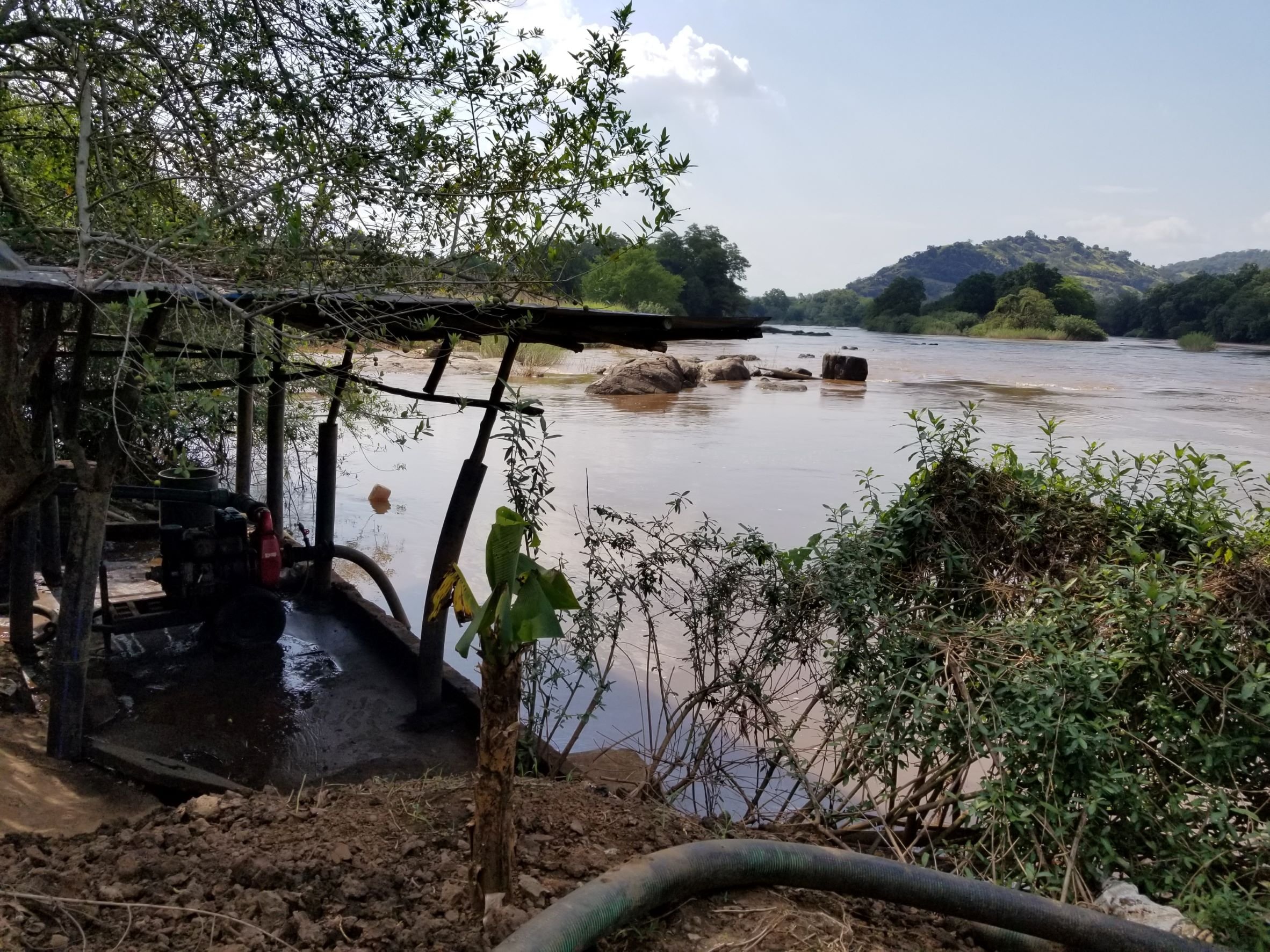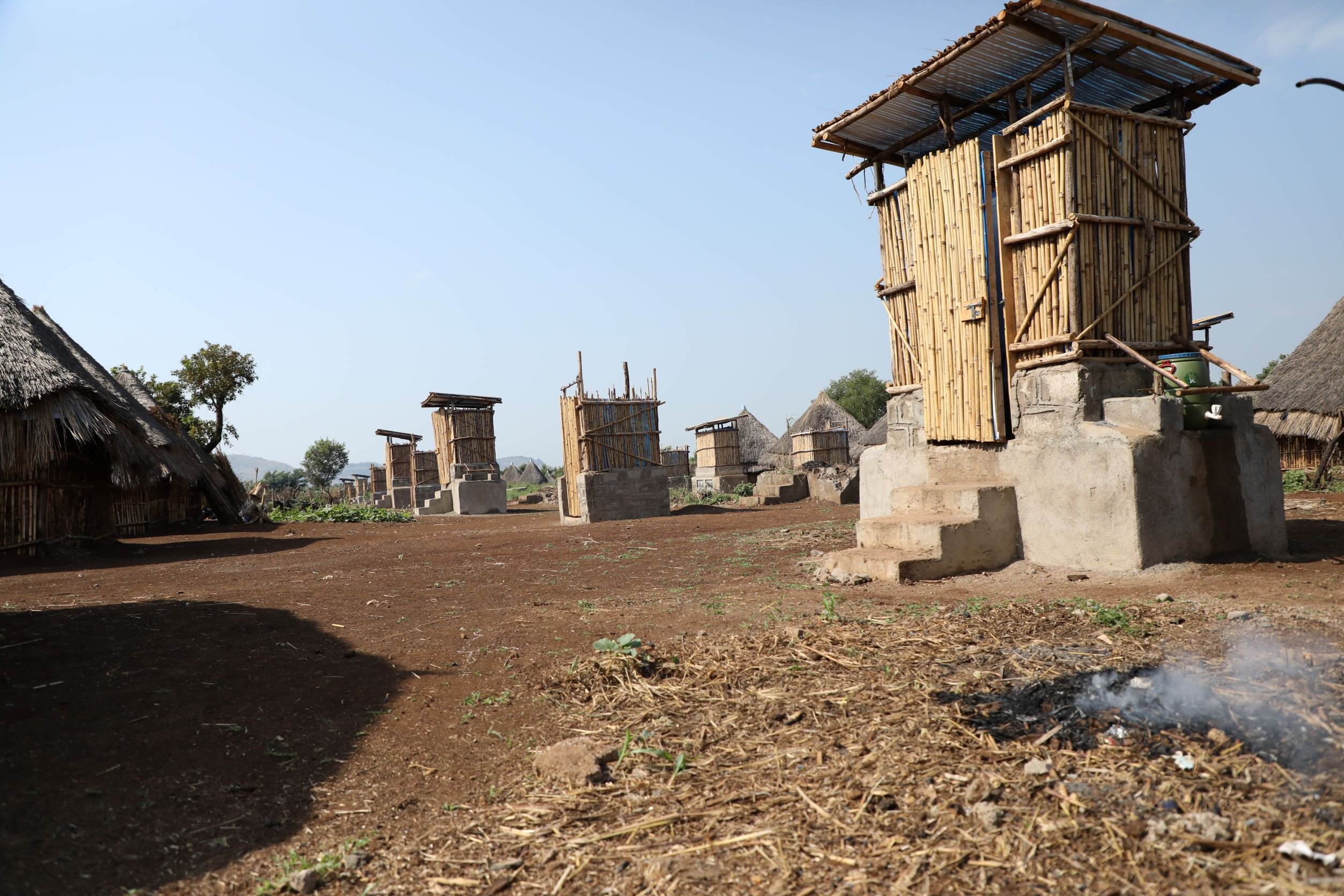Seven refugee camps in the Gambella region of Ethiopia, temporary home for 375,000 South Sudanese refugees, require a massive system for clean water and sanitation.
The need for clean water never ends in the Jewi refugee camp in western Ethiopia. To make safe drinking water available to the camp’s 66,600 South Sudanese residents, Oxfam draws it from the nearby Baro River and a network of pipes brings the treated water to taps near people’s homes in the camp and nearby host communities.
But when the electrical power cuts out, and the water pressure drops causing the pipes to run temporarily dry, people still need water, says Nuajok Khan Chuol, a 28-year-old mother of four with spiky hair braids. “Sometimes we don’t get water from the taps, and people go into the forest to look for water,” which she says leaves them vulnerable to crocodile attacks.

It’s a massive system and massive responsibility for Oxfam, one that Chuol says she has appreciated ever since she first came to Ethiopia in 2016. “We got jerry cans, and we get water,” Chuol says. “Without these things we would suffer.”
Need for clean water
Jewi camp is one of seven refugee camps in this western Gambella region that collectively hosts more than 375,000 refugees from South Sudan who have fled ongoing conflict in their country. Nearly 90 percent are women and children, and 60 percent are younger than 18. The government of Ethiopia and local communities have contributed thousands of hectares of land to host the refugees.
When the war first broke out and people began arriving in Gambella in 2014, Oxfam initially provided clean water, sanitation, soap, and training programs to help people understand the importance of good hygiene. In 2015 and 2016, Oxfam expanded its work to Jewi. Since then, Oxfam has begun work in what has become the largest camp area, Nguenyyiel, which now hosts more than 122,000 people. In 2022, the United Nations appointed Oxfam the lead agency for water, sanitation, and hygiene for all seven refugee camps.
During these years, many of the organizations responding to the refugee crisis in Gambella have gradually cut their budgets to the point that Oxfam estimates that water, sanitation, hygiene, and food aid are only about 50 percent funded, leaving Ethiopia and other countries in the region to cover the shortfall.

The network sources water from the Baro River and nearby wells, and treats it to ensure it is safe. To supply just the Jewi camp and nearby communities, Oxfam uses diesel-powered pumps to send 1,500 cubic meters of water each day to a network of 97 water tap stands where residents of the Jewi camp can get water.
The work to maintain and upgrade the water system, which uses more than 100 kilometers of pipes for the seven camps, is a challenge. In just one treatment site near the Jewi camp, all six 95,000-liter metal storage tanks need new plastic liners, which are starting to wear out. The average cost for just one is around $20,000.
A better but initially more expensive solution would be to “replace the tanks with concrete tanks, so you don’t need a liner,” says Endegena Ashenafi, Oxfam’s program director in Ethiopia.
Likewise, a solar-powered system would reduce an expensive diesel fuel bill – but it would cost about $200,000 to install, according to Malaku Mekonnen, Oxfam’s water system manager in Gambella. If today’s high diesel prices continue, he estimates they could recover the cost in three and a half years.
Right now, Oxfam and local government officials estimate that refugees in the seven camps are accessing about 16 liters of water per person, per day – acceptable by some standards, but still below the UN High Commissioner for Refugee’s standard of 20 liters. To increase the water supply, it will be essential to upgrade all aspects of the system.
A place to go
When hundreds of thousands of people converge at a place with no established sanitation system, there is a serious risk of disease. To head this off, humanitarian groups operating in Gambella are building latrines: Oxfam alone has constructed 8,600 latrines (1,000 of them in the last year) just in the Nguenyyiel camp – where there are 122,000 people.

But they are not enough. Only about 25 percent of the households in all seven camps have access to a latrine.
Initially, Oxfam built latrines using metal sheets for walls and a roof. Some of these latrines were disassembled: At a time when aid organizations were cutting their food rations, people stole the metal sheets and sold them. Now, Oxfam is building latrines with bamboo. And to promote a sense of ownership of these essential facilities, Oxfam is working with about 270 refugee volunteer latrine builders.
One of these bamboo-walled latrines was recently installed near the home of Nyabol Khok, who came to Nguenyyiel in 2021 to escape violent conflict near her home in Naga, South Sudan.
“We walked day and night for three days to escape the fighting,” she says, adding that she hoped to find a job in Ethiopia so she could provide food for her family, including her six children ranging in age from 20 to six years old.

After building a thatched-roof shelter for her family, Khok, who is 45, says they also put up a fence nearby to provide a little privacy in an area where they could relieve themselves out in the open. She says they welcomed the recent construction of the bamboo-walled latrine, as well as a bathing enclosure (also made of bamboo) where people can take a bucket of water and wash up with some privacy. Only a few steps farther away is a bank of water taps.
Access to water and a decent latrine will not solve all of Khok’s problems. She’s struggling to find work and income to augment the humanitarian aid she receives at the camp, and says the lack of employment concerns her. “Here we are doing nothing. I’m looking for something to do and there’s nothing.”
Nevertheless, she says she feels more secure since escaping the conflict in South Sudan. “Things are improving,” she says. “We’re getting food, and we saved our lives by coming here. My children are in school.”
“We are very happy,” she says, standing next to the latrine in the bright sun. “I feel like a human being now.”
